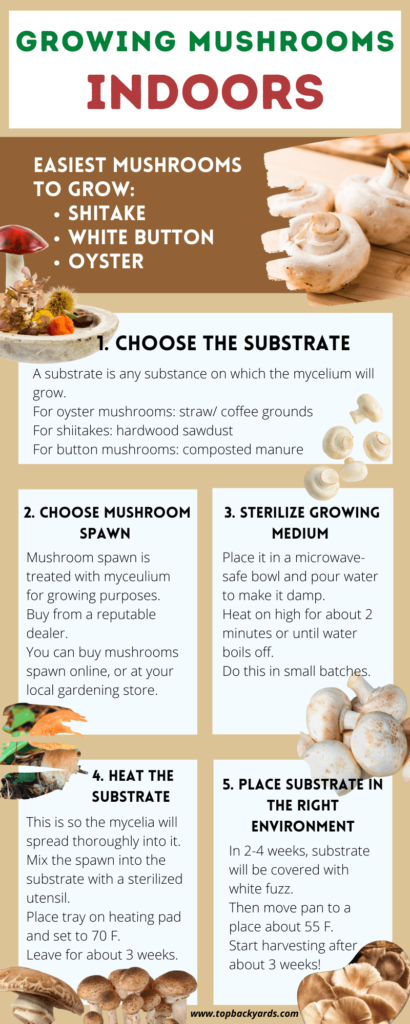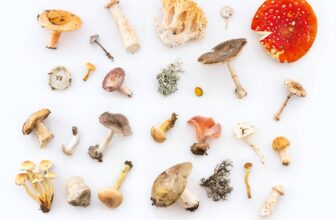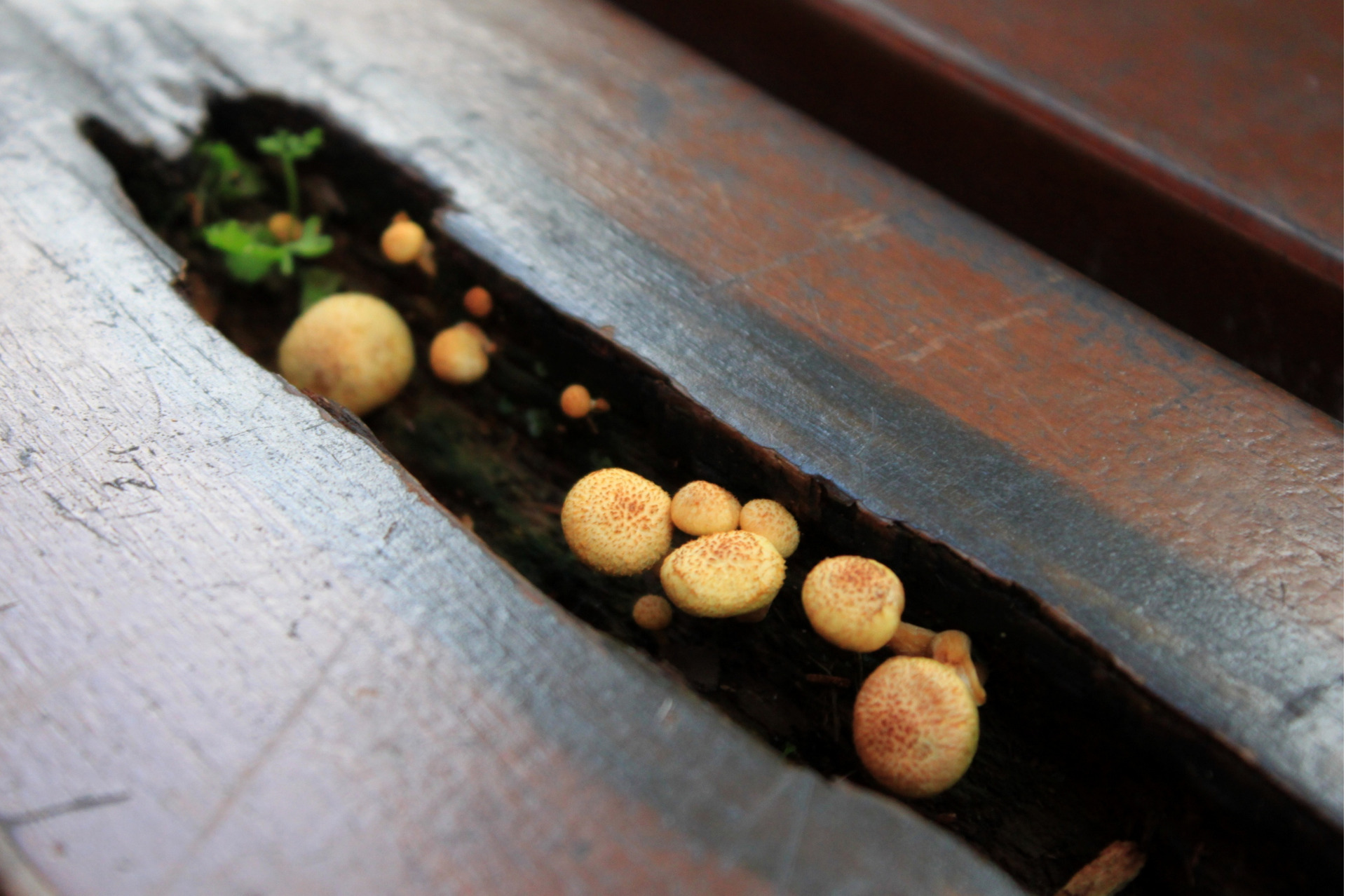
Table of Content
Are you interested in learning how to grow mushrooms? Growing mushrooms is something that many people find interesting to try, but difficult to figure out how to do. There are tons of edible types of mushrooms to choose from and many have specific growing requirements that can be quite difficult for you to replicate at home.
However, don’t despair, because there are several less picky types that you can try growing. As long as you have the right supplies and follow the steps correctly, you can easily grow your own delicious mushrooms indoors.
In this article, we’ll be going through all the steps required to start your own indoor mushroom cultivation. Let’s begin!
Decide What Type of Mushroom to Grow
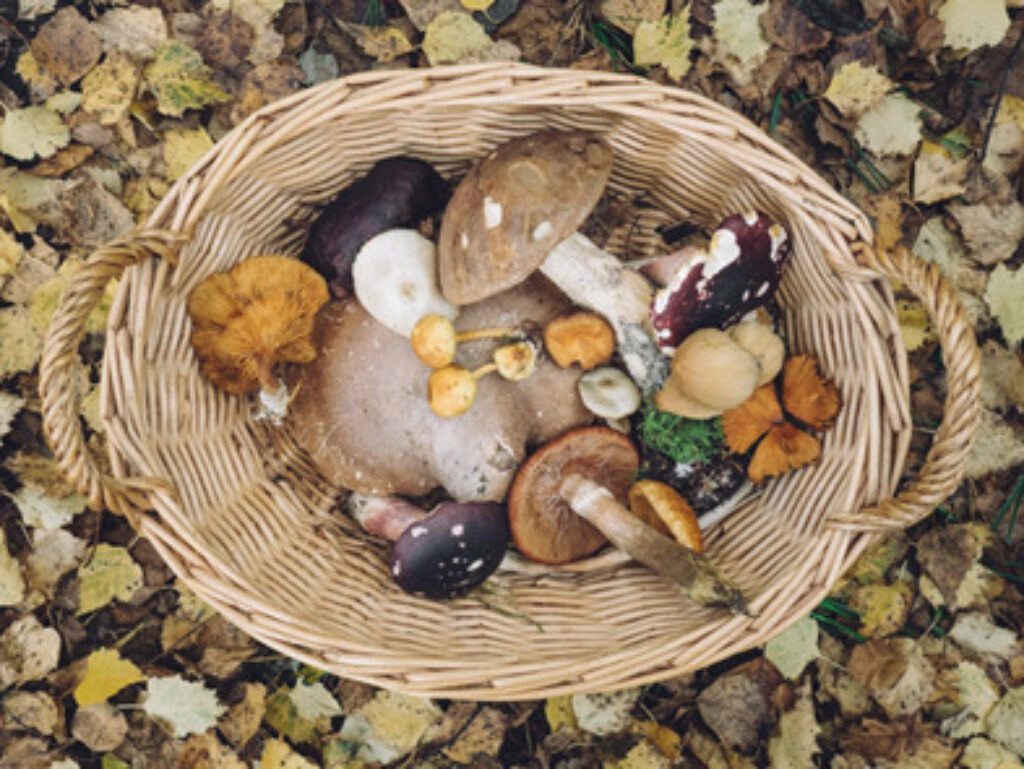
There are three types of mushrooms which are easier to grow indoors and these include oyster, white button and Shiitake mushrooms. While the method used for growing each type of mushroom is similar but you’ll have to go for different substrates since once type doesn’t fit all.
A substrate is any substance on which the mycelium (vegetative part of the fungus) will grow. The best substrate for oyster mushrooms is straw or coffee grounds whereas for Shiitakes it’s hardwood sawdust and for button mushrooms: composted manure.
Whatever type you choose to grow, make sure it’s the type that you really want to eat.
Purchase Your Mushroom Spawn
In case you’re wondering, mushroom spawn is a substance which has been treated with mycelium for growing purposes. Buy yours from a reputable dealer so that you can get good quality products.
There are many online retailers that sell high-quality mushroom spawn or you can go check out your local gardening supply store.
Sterilize the Growing Medium
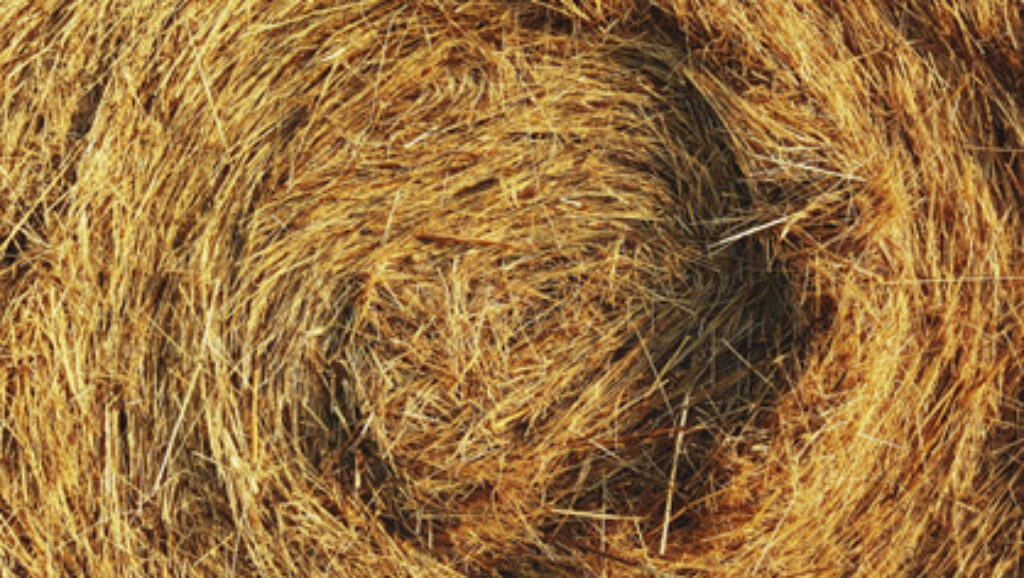
The growing medium or substrate is whatever you plan on using to grow your mushrooms like sawdust or straw for example. It’s important to sterilize the growing mediums before introducing the mushrooms spawn to it so that any micro-organisms that could harm the mycelia will be destroyed.
The easiest way to sterilize the substrate is to put it in a microwave-safe bowl and pour enough water just to make the substrate damp. Place it inside the microwave and heat it on high for about two minutes or until the water boils off.
This way, there will be no risk of having microorganisms in your substrate, making it safe enough inoculate with the spawn. You may need to do this in several small batches, depending on how much you plan to use.
Heat the Substrate
Heat the substrate so that the mycelia will spread thoroughly into it before mushrooms can be produced. Place a few handfuls in a shallow baking tray with a large surface area.
Mix the mushroom spawn into your substrate carefully with a utensil, but make sure the utensil is sterilized. If it’s not, there’ll be no use of sterilizing the substrate. Place the tray on a heating pad and set it to 70 degrees Fahrenheit (the ideal temperature required for mushroom spawn to grow). Placing the pan in a warm area in your home might also work, depending on whether you live in a hot climate.
Leave the pan where it is for about three weeks and make sure the environment is dark since this will encourage the mycelia to permeate the growing medium.
Place Your Substrate in the Right Environment
After about two weeks, check on your substrate to see if it’s fully colonized. If it is, you’ll notice that it will be covered with white fuzz. The process can take anywhere from two to four weeks so you’ll have to patient.
When the substrate has been colonized, move the pan into a dark and cool environment (roughly about 55 degrees Fahrenheit). If you’ve got a basement, it would suit perfectly but if not, a drawer or cupboard will work too. Here are some things to look out for:
- Mushrooms prefer to grow in a cooler environment, below 70oF so don’t let them get too hot.
- If you happen to see any dark green or brown spots, remove them from the substrate and throw them away.
- Cover up the substrate with a handful or two of potting soil. Spray it with water, making sure it’s thoroughly damp and place an also damp towel over it to stop the loss of moisture.
- Remember to keep the mixture cool and moist as your mushrooms start to grow. Spray with water regularly.
Harvest Your Mushrooms!
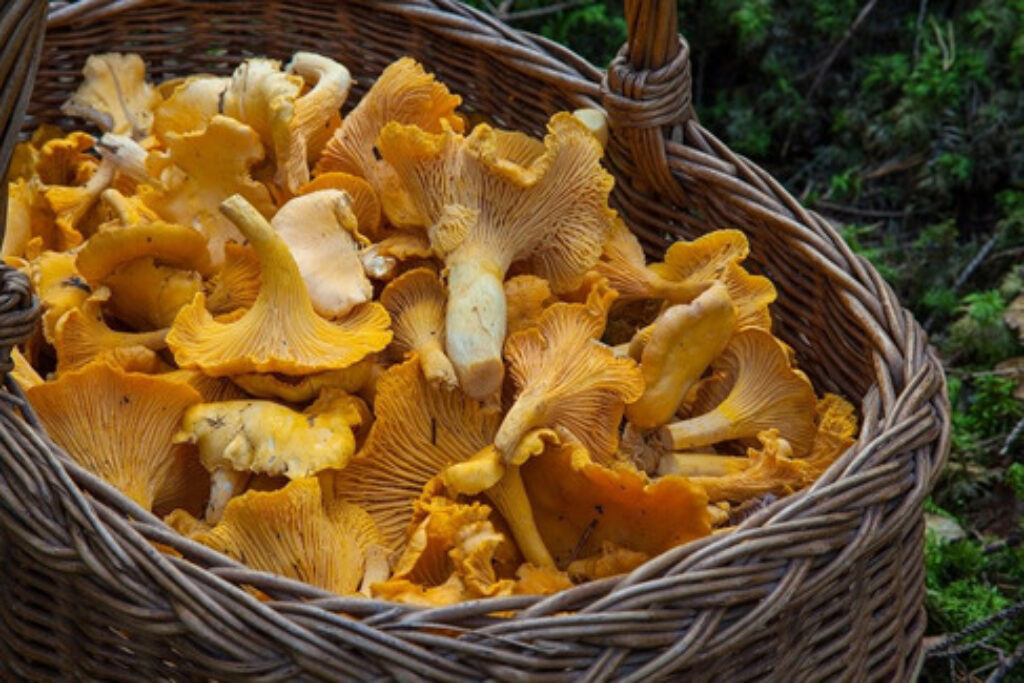
This is the exciting part! After about 3 weeks, you’ll begin to see tiny mushrooms appearing on your substrate. It’s important that you continue to keep their environment moist, dark and cool so they’ll grow well. As soon as the mushroom caps can be fully separated from their stems, you’ll know they’re ready to be harvested.
Although plucking the mushrooms with your fingers is fine, it can damage the fungi that’s newly developing just beneath the surface. The best way to harvest them is by using a sharp knife to cut them at the base of the stem. Store the mushrooms wrapped in a newspaper or placed in a paper bag in the refrigerator for up to a week.
Remember: Rinse the mushrooms well before cooking or eating them.
Other Methods of Growing
There are many ways you can grow your own mushrooms, be it outdoors, indoors or in containers and many different types of growing mediums you can use. Here are some easy options to try:
Mushroom Kits
If you’re growing your own mushrooms for the first time, we recommend trying out a ready-made mushroom kit. These can make the job a lot easier and they don’t even cost much.
If you’re interested in this option, check our article on 10 best mushroom kits for growing your own mushrooms.
Growing Mushrooms on Logs
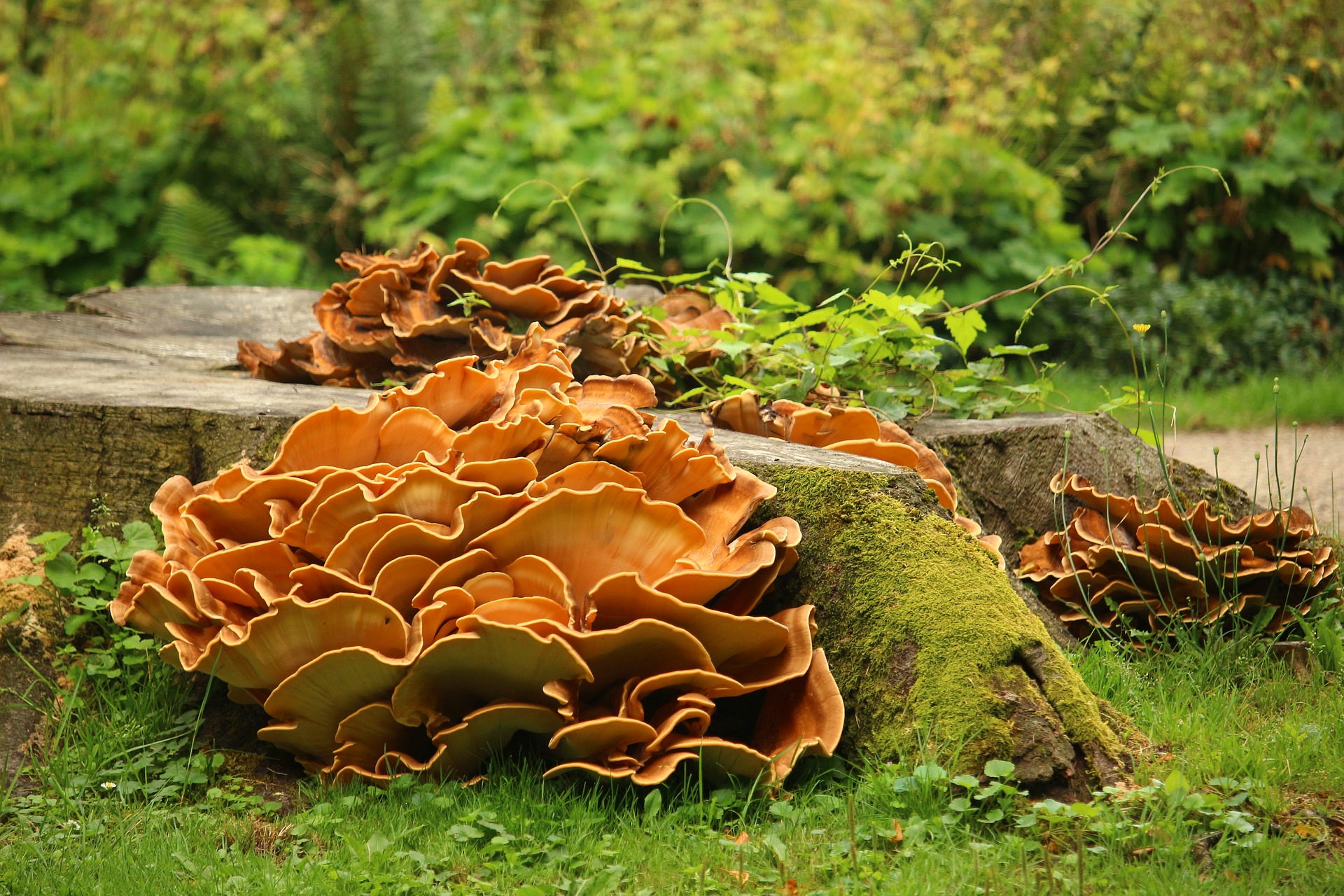
This is a great an inexpensive way of growing mushrooms. You’ll need a few tools and a bit of preparation but it’s actually worth it. Try growing your own mushrooms on a log indoors or outdoors, whichever you prefer.
Growing Mushrooms in Containers
This is a great, low cost option that you can try out easily at home. Practically any container that’s at least 8-12 inches deep will be perfect for growing mushroom, but it also depends on the type of mushroom you want to grow.
The Takeaway
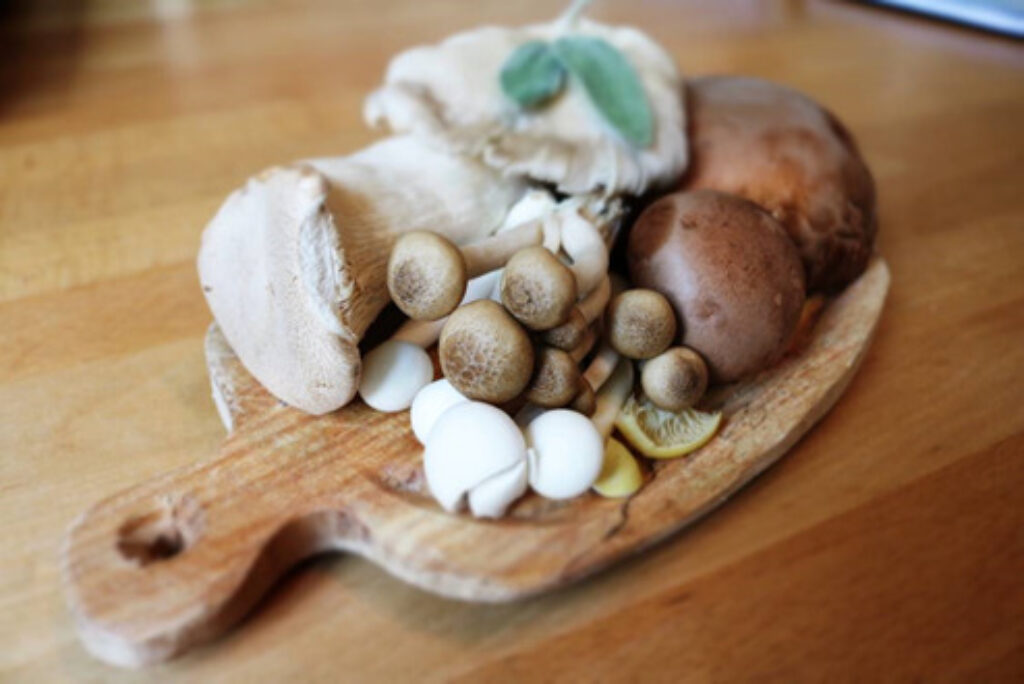
As you can see, growing mushrooms isn’t quite so intimidating after all. It takes a little effort at first, to make sure you get it just right but once done, all you need to do is keep watering the substrate and then finally you get to reap the rewards!
We hope our article was useful in getting you started on your indoor mushroom garden and wish you all the best! Enjoy the process and your own delicious, home-grown mushrooms!
